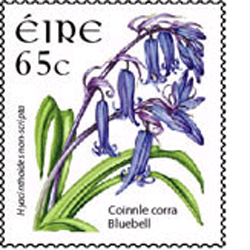Pollinators are an essential part of a garden; so essential in fact, that 90 percent of the 250,000 flowering species now in existence rely on them according to the University of Georgia. Bees and butterflies make up the largest group of pollinators; however, the interior design of certain types of flowers makes it impossible for bees or butterflies to pollinate. These plants must rely on other types of insects to seek out the nectar they produce and pollinate them in the process.
Bees
Bees are by far the largest group of pollinators. Vegetable gardeners know how important bees are. Without them the vegetables they grow would need the flowers hand pollinated, which is a very time consuming process. Planting a wide variety of flowers throughout the garden is a good way to attract the widest range of bees. Flowering plants that bees pollinate include buckeye trees (Aesculus), American beautyberry (Callicarpa), yellow popular (Liriodendron), magnolia (Magnolia) and mountain mint (Pycnanthemum).
Butterflies And Moths
Butterflies are the second largest pollinators. The sad part is, like bees, their numbers are in decline. In addition to planting nectar and host plants, creating a butterfly habitat is a good way to help these winged beauties survive. Flowering plants that butterflies pollinate include butterfly bush (Buddelia), pawpaw tree (Asimina), spicebush (Lindera benzoin), milkweed (Asclepias spp.), purple coneflower (Echinacea purpurea), bee balm (Monarda) and phlox (Phlox). Moths are creatures of the night seeking out nectar from night blooming plants such as yucca (Yucca), pollinating them in the process.
Ants And Beetles
Ants and beetles also pollinate flowers. Beetles were among some of the first crawling insects to visit flowers, although they do destroy the flowers in the process by eating their way through the flower petals and other floral parts, according to the US Forest Service. Magnolias (Magnolias) and spicebush (Lindera benzoin) are two of the most common plants that beetles pollinate. They are also responsible for pollinating the flowers of possum haw (Viburnum nudum) and goldenrod (Solidago spp.). Ants either help or hinder pollination. When an ant crawls into a flower, its body becomes covered in pollen and as it crawls along the pollen is rubbed off by the flower parts, hopefully resulting in pollination. Ants are aggressive and chase away other pollinating insects. They are also known to destroy floral tissue and reduce the viability of pollen by covering it with their secretions.
Wasps, Flies And Thrips
Wasps, flies and thrips are examples of other insect pollinators. Not all pollinators are good however. Thrips do extensive damage to the plants they pollinate. While the plants thrips damage do not always die, they do have noticeable damage. Wasps pollinate a wide variety of flowering plants including: chokecherry (Aronia arbutifolia), fothergilla(Fothergilla gardenia), boltonia (Boltonia asteroids) and stoke’s aster (Stokesia laevis). Flies are another insect that pollinates flowers such as Carolina jessamine (Gelsemium sempervirens). Some types of flies are mistaken for bees in the garden because of their appearance. Flies have four wings and bees have two. The next time you see those large bumblebee looking insects, look a little closer and you may find out they are really flies
Read more: Insect-Pollinated Flowers | eHow.com http://www.ehow.com/info_12104819_insectpollinated-flowers.html#ixzz1Zm…

- Login om te reageren
